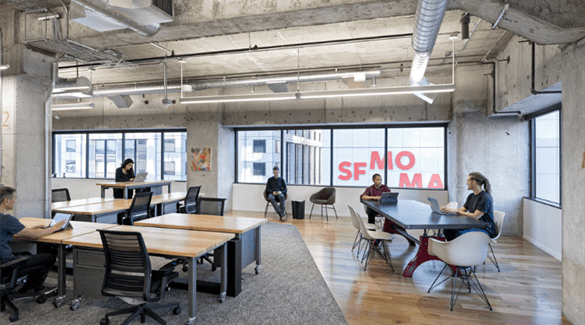Catering for different personality types in the working environment
Catering for different personality types in the working environment
18-Jul-2019
In any working environment, change is inevitable. Whether that be updating your product and service listing, improving your business processes or making interior and exterior changes within your space.
Any change that is done can have an impact on both the productivity and happiness levels of your employees. Ensuring your employees maintain high levels of job satisfaction and engagement can have a great impact on your businesses bottom line.
Whether you are looking to regenerate and revive your office interior design, or are considering a whole office relocation, here are some of the ways you can cater to the individual needs of the personality types within your workforce, in order to create the ideal working environment to boost their potential.
Workplace Differences: Extroverts Vs. Introverts
It’s important to acknowledge that each business consists of extroverts and introverts.
Extroverts thrive when they are in the middle of the action; brainstorms, collaborations, dynamic interactions with large groups and bouncing ideas in flexible and informal meetings. Extroverts are shaping the office design of the future. They are most likely to be productive in casual open spaces where they don’t feel boxed-in or tied-down.
For them, a flexible working environment is ideal. Hot-desking in areas according to current projects or groupings of collaborators will encourage them. They will thrive with the freedom to interact in brainstorming spaces, big tables and large format sofas.
On the other end of the personality-type scale are introverts. They find constant social interaction distracting and draining. Their productivity levels will fall dramatically without access to quiet areas in which to concentrate. It is not that introverts can’t function working within large groups, but that they need periods of time working alone in which to recharge and re-energise in order to be most productive.
Somewhere in the middle is the ambivert personality type. It is quite common for both extroverts and introverts to adapt and eventually display ambivert characteristics, especially as they get older. Ambiverts are inter-changeably powered by social interaction and periods of quiet focus. If you have already created a working environment that satisfies the needs of both extroverts and introverts, then you’ve got the ambivert covered.
To design your office interior to accommodate all personality types, we recommend looking at ‘zone models’ of working.
Focus, Collaboration, Meeting and Socialising Zones
“The Focus Zone”
This is primarily open-plan with access to little rooms, acoustic pods and quiet areas where all personality types should feel comfortable and able to concentrate, singularly or in small groups.
Collaboration zones
These zones areaccessible areas for non-planned and informal meetings. A place where the exchange of ideas can take place quickly and with flexibility for other collaborators to join in. These areas reduce the traffic in meeting rooms, allowing them to be booked for necessarily confidential meetings.
Meetings zones
Although many companies require boardroom space, it’s important to assess which meetings imperatively have to take place within an enclosed and formal room. These zones create a sense of regulation and authority.
Social areas
These are paramount for the wellbeing of your staff. In order to avoid information over-load, employees need regular breaks so they operate at peak performance. Providing designated neutral areas for staff to recharge, and interact with others on a social level, could benefit individual productivity.
Fitting out your office to suit zoned areas
In order to create zoned areas in your office environment – and therefore, catering to the varying needs and personality types of your employees, there needs to be suitable products – including workstations, executive tables and seating.
It’s important that each zoned area has its own look and feel, as well as considering your target market and what your company’s brand stands for.
Being able to provide working solutions that cater for all your employees is very important and will only lead to greater productivity and satisfaction.

